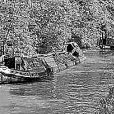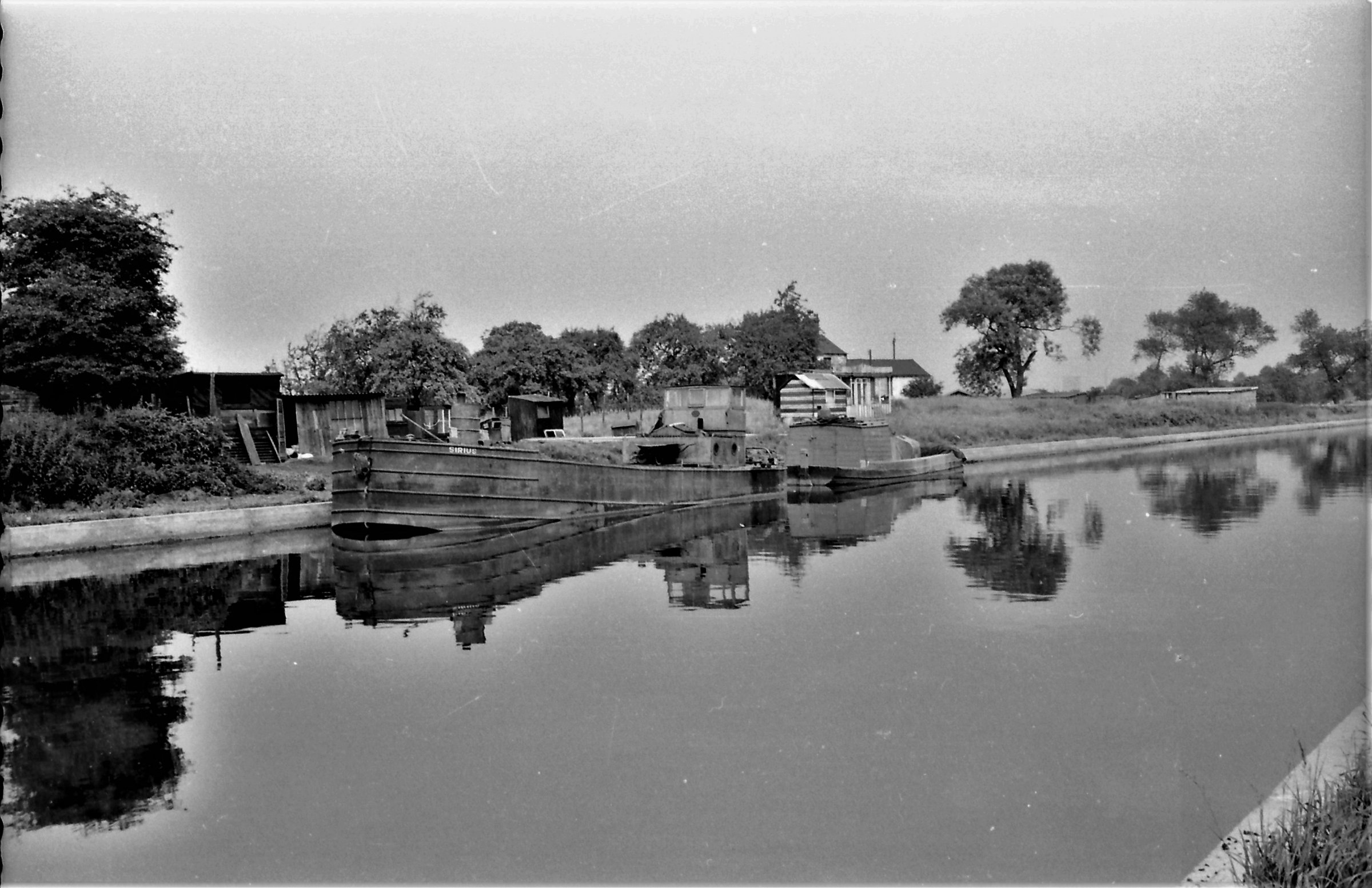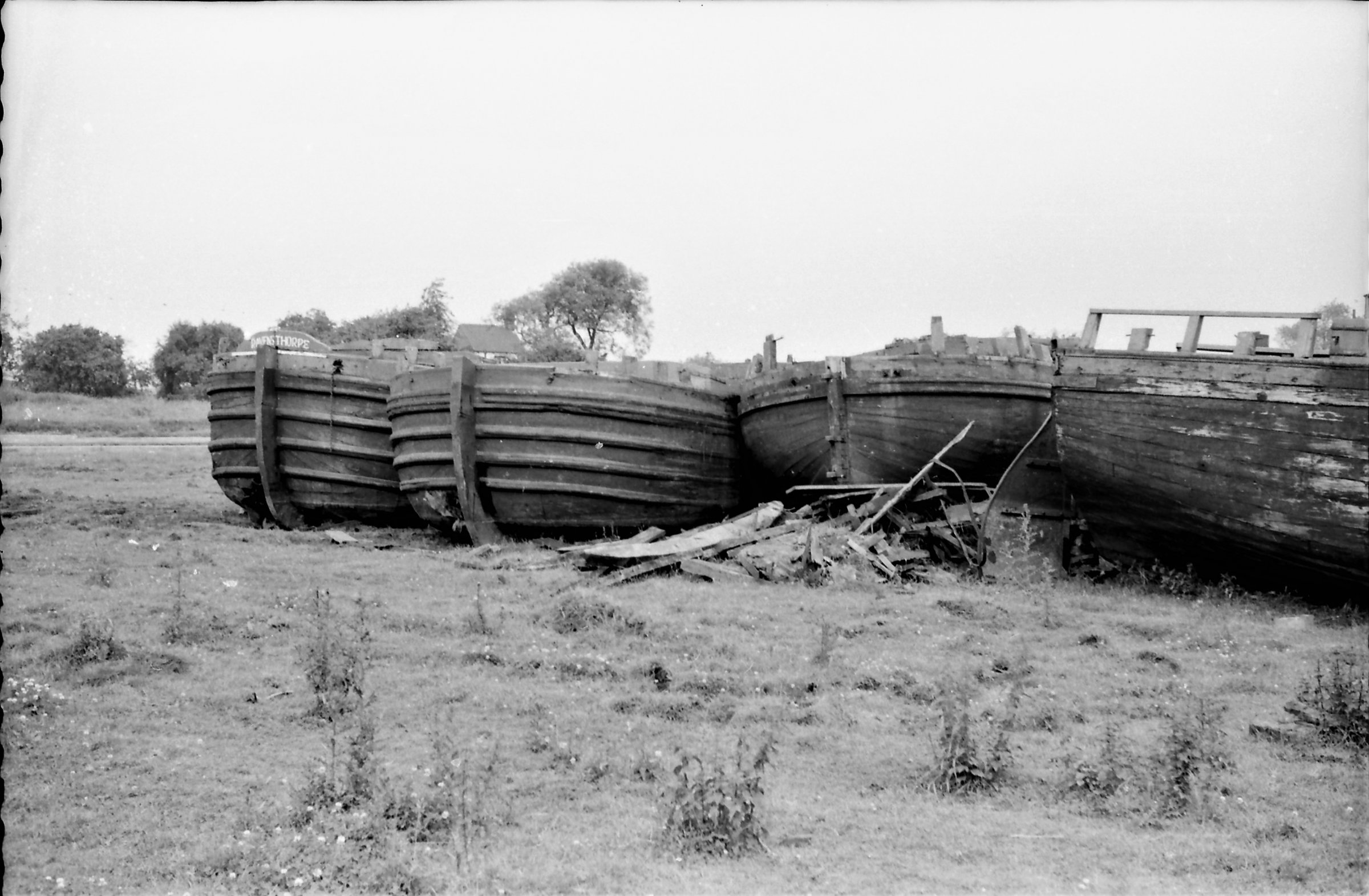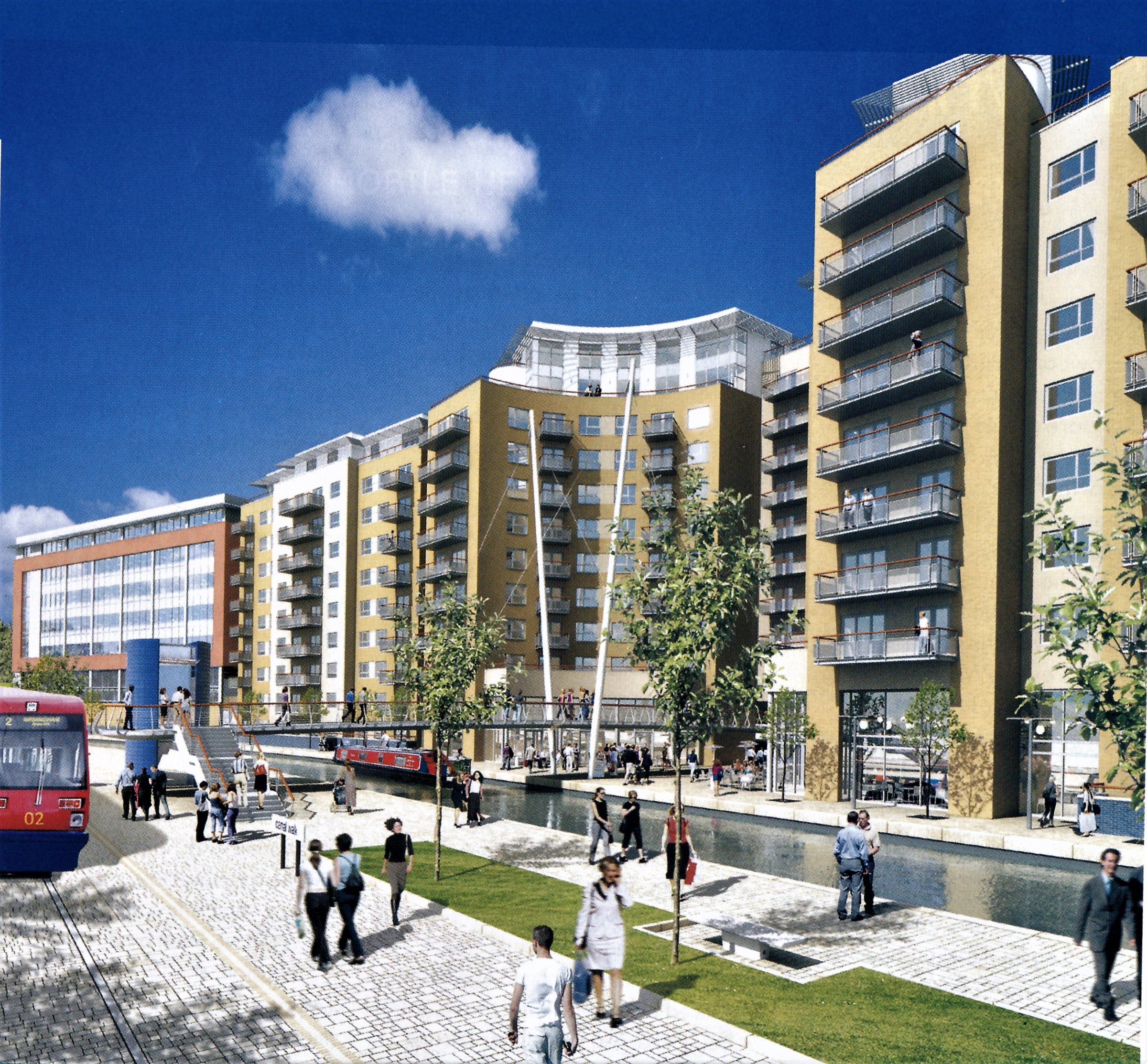-
Posts
3,397 -
Joined
-
Last visited
Content Type
Profiles
Forums
Events
Gallery
Blogs
Store
Everything posted by Heartland
-
I just happened to pick up on the Birmingham Canal Navigation Society notice before any CRT. The team there are dedicated to passing on boating information regarding their network, and Peel Wharf is on their network. There is no need to rubbish what they do! The comments made on this site about CRT are so far useful, however. Whether the move will be in the long term have a practical value, can only be hoped for. As to the Icknield Port project will this currently odious eyesore covered in graffiti and a no go area for walkers see contractors working there to improve this site?
-
I believe these images are 1967 or 1968. They were 35mm negatives. I next image is the SIRIUS would this be the same place? Another image is a sunken boat at Elsecar c1960- that is 120mm roll film
-
The BCNS has provided alternative boat facilities details following the closure of the CRT office at Fazeley. A pertinent question is why was the closure made?
-
Identifying the type of craft may also be useful as the keel generic family had different types There are also other buildings in the next shot:
-
Whether it is proved that clips have been edited to show inconsiderate behaviour by cyclists, or not, the number of cyclists who are inconsiderate remains a low percentage, I believe. There is still enough of the inconsiderate people to fill up many clips of such behaviour though. In Birmingham there are those that cycle along New Street at speed weaving in and out between the many pedestrians there. On the Farmers Bridge locks cyclists still race up and down the towpath and speed around the ICC and Arena. In this politically correct world certain people, in fact a growing number of people, believe they have the right to do so. On the streets it is a police matter to enforce, on the towpaths should CRT do more to prevent selfish behavior?
-
I thought towpaths had become unsafe through the mindless action of cyclists travelling at speed, as well as trail bikes and quad bikes churning up the ground. Now the waterway is not safe. It is only a matter of time before a jet ski collides with something, Then there is the wash that may damage the bank. A question that must asked is how they get to the water. In fact should access be more tightly controlled.
-
The steel terminal is probably the last vestige of the old Round Oak site and at one time home to some of the former locomotives used there. There is also a plan I understand to restore a passenger service to Brierley Hill. Objections!- yes there is a NIMBY link there I suspect, but why especially as there is a prospect of improved transport
-
This image is from the RCHS Gardiner Negative Collection and is amongst a group credited to the Calder & Hebble Navigation. It shows a group of barges on the bankside. But it is not clear where it is. There is also some damage to one of the craft.
-
I did not think it had been done, but have not been over there recently. No doubt a scheme that has not yet been proceeded with, like Icknield Port
-
In 2005 there was a proposal to extend the waterfront at Merry Hill with a new residential and business centre built of disused land. There was also a plan to extend the West Midlands Metro to it. The Metro extension was planned to be made by 2009. This metro extension has yet to happen although that project will go ahead soon. Can any body advise if any of the buildings shown have been constructed yet?
-
They are also very good at putting rogue cyclists in places where they can do most damage!
-
It is annoying to have access blocked at Spon Lane Locks, but was the turn on to the Gower Branch and up the only BCN staircase lock, not considered. You probably have passed those other boats as they ascended Factory
-
I will repeat, if finance was the only obstacle, as although it is the most essential factor (that is if not sufficient less would get done), there have been other factors that delay construction or reconstruction. Moving roads is one and throwing money at the scheme may not get it done, or even done correctly. With the Droitwich a major obstacle was the M5 which eventually was done through converting the brook culvert under the M5 into a navigation. But took time and engineering surveys to achieve. Some boaters may even now consider it not enough! With the Lichfield & Hatherton the essential tunnel under the Cross City Line will be a factor that is in effect a make or break situation. It has reached this stage through careful negotiation and political lobbying. Now finance is needed, as it was for the M6 toll aqueduct. The amount of money already spent far exceeds what is needed for this stage, but needed it is. The reason for the earlier comment is related to wasting funds and finance where not needed and with rip off ecologist, rip off solicitors and rip off land owners, it is a sad fact of restoration. Perhaps most sad are the parts not restored because of such parasites. But then on the other side of the coin are such restorations needed ? Maintaining the waterway is also done at a cost. Yet, with rising boat numbers on our waterways, such restored sections are useful places for mooring as well as cruising
-
This is of course a key stage in the restoration process. Planning has been on going for years and in view of the money already spent it is relative in perspective. With this link made much of the canal could be made through to Brownhills and put craft on the M6 Toll Aqueduct for the first time. It will also be a useful cycle route, provided suitable width is given. May be Sustrans would assist with costs?
-
If finance was the only obstacle, I would think more progress might have been made. Besides, there is a certain appeal in restoring dead end waterways. If this had been frowned upon, the Llangollen would be still simply a reservoir feeder. Rip off ecologists are one factor that delay reconstruction. In one piece for the RCHS Modern Transport Newsletter, I include details of the construction company Buckingham who included in their costs for the improvement to the Oxford- Bicester route, the charges made for plant, bird, animal and invertebrate surveys. This is quite a regular thing, and where factored in construction costs perhaps acceptable. In the case of Buckingham it was Network Rail that paid the additional charges. We as tax payers, of course subsidised the pay for the ecologists. Though this sentiment is most important in the modern way of things (some may disagree), I cannot help feeling that the commercial charges made, can make a difference to those who can least afford it. Especially if preservation schemes have within their membership those who could undertake such tasks for the good of the restoration scheme. This is exactly what happened on the Llangollen Railway extension to Corwen East, where members assisted with the protection of nesting birds and help avoid the regular and expensive ecologist consultations. Patrick also touched on the diverse issue of land ownership, but political support is also important. The difficulties the Rochdale and Huddersfield encountered were partly smoothed over by assistance from many quarters. This assistance helped the relocation of roads and the building of new bridges and tunnels
-

Advice for Upper River Severn Please
Heartland replied to The Grumpy Triker's topic in General Boating
Well I understand the tidal section is south of Tewkesbury. And by this definition covers the river to Gloucester Lock and over towards Over. But then there is Tidal part where the river becomes an Estuary So what can this be called. The Lower Lower Severn. And what about the navigation at Shrewsbury is this the Upper Upper Severn. Being a historian, I prefer anything north of Bewdley to be called the Upper Severn and that below the Severn. I also recall that a few years ago there were plans to restore the navigation upstream of Bewdley and that restoration had the name Upper Severn -
Yes, for the popular waterways, there may well be an excess on certain stretches, but as the number of craft in use increase the best places are new marinas. There however remains places where suitable moorings are a potential benefit. Besides slowing down for moored boats is not the exclusive reason for reducing speed. Wash can destroy or damage banks and then there are the fishermen......especially those that hide between bushes so that they are hard to see, and their rods too if the light is not good
-

Advice for Upper River Severn Please
Heartland replied to The Grumpy Triker's topic in General Boating
The term Upper Severn is an interesting one, as the navigation from Stourport to Gloucester, I would prefer to call Severn rather than Upper Severn. So where does start Upper Severn start? There are limited navigation sections at Coalbrookdale and Shrewsbury. That at Shrewsbury was made possible though the making of a weir of sufficient height to permit a trip boat to run between the English & Welsh Bridges. Navigation was once possible up river as far as Pool Quay and in real terms the sections from Shrewsbury to Pool Quay and Shrewsbury to Bewdley are best referred to as Upper Severn. Above Pool Quay there was a high weir made in Medieval times that prevented barges from travelling further up stream, although it is believed that it was once possible. For those who visit Pool Quay today there is still an inn there that was once used by the barge owners. -
I believe there are various suitable site for linear moorings on our waterways and I would like to see more on the less used waterways. There are sites on the BCN where this could apply. One in particular is at Galton Bridge where the towpath, nearest the station, is disused and overgrown. There is a long length here that would be useful for moorings and would have access controlled through a gate placed near the bridge where road and a link to the used towpath is possible. The down side is that CRT would have to spend money for dredging, and constructing the moorings. An advantage would be the access to the train station and buses.
-
When the whole of the posted images are looked at on Ian and Irene's blogspot it appears the cruiser was in difficulty and had run aground on the offside of the canal. This rather shabbily painted craft received help from a passing narrow boat who threw a rope to the steerer in order to assist. The cruiser was pulled back into the channel but it would appear the steerer had little control, whether through wind factors, engine difficulties or simply a lack of experience. The damage caused to the moored narrowboat, should be down however to the cruiser owner to put right, I believe, and as the name is clearly visible on the blog page, I would assume that this craft is traceable and a claim from the owner for repair costs possible.
-
In April 2005 Waterways World published a spoof or, at least. hopeful article on the Cromford Canal where restoration was intended by 2020 including an image of a narrow boat passing towards a navigable Butterley Tunnel (following restoration in 2015 and the move of a portal from Sapperton to adorn the entrance!). Inspired by the restoration of the Huddersfield and Rochdale Canal, the scheme was said to be part of an intended British Waterways plan. April Fool, or not, restoration of the Cromford Canal has proceeded sluggishly and in fact the momentum of canal restoration across the country appears to be in reverse gear now. So what will happen to the Cromford in the real world? And, indeed, the rest of the restoration schemes?
-

Taking a Brummagem boat to the NEC boat show, January 1985
Heartland replied to John Brightley's topic in History & Heritage
There is sadly no boat show at the NEC, and I was told this week that the name is still in the ownership of the previous organisers, So any chance of a new boat show there appears remote, at present -
If I recall Stewart's & Lloyds did allocate plant numbers to wagons and locomotives, which were white plastic and glued on. Whether it applied to boats, cannot say, but it is possible that records were kept and passed down to an archive or into private ownership. Has it been established if all these post 1948 craft were open boats?
-

Is it time for a new National Waterways Festival
Heartland replied to Heartland's topic in General Boating
There appear to be a lot of negative waves regarding the IWA (1) It has been suggested that there is favoritism, i believe, in the allocation of mooring places. (2) The IWA's organisation skills in planning the events had effectually ceased to have any reference to skill and more an inability to deliver. (3) The lack of finding a cross section of sales stands for the boaters and public needs (4) A non provision in general to attract a suitable attendance to finance costs. The IWA has had its ups and downs and in one of those many troughs they had they made the ill advised decision to expel both Charles Hadfield and Tom Rolt. At the moment they may well be in another trough and need more support. Yet if is the case there needs to be a change in policies. Failure to change may well result in the establishment of a rival organisation or at least the rise in importance of existing Operators organisation -
I often wonder if heritage is a word invented by those who have difficulty in describing the age. It seems to cover the time span from the bronze age to five minutes ago. For motor bikes the terms veteran and vintage have some rough time period, but for the dug out log boat, clinker and carvel built boats there appears to fit the description "heritage will do". If Heritage has some meaning that is something that has a "heritage value". In this aspect it came to mean that it had a certain importance and may be deserved either preservation or recording. It is often a mystery how Historic England decides on listing structures and their criteria may well be some sacred hidden text for what actually receives listing status. Classifying boats is equally of concern. For those who can tell a Bantock from a Cuckoo or a Star Class from a Town Class are genuine enthusiasts, but not every body has those perceptions. Still telling the difference between a bolinder powered semi diesel engine, a modern diesel and a steam boat with boiler and engine (or even a boat driven by producer gas) should be reasonable to expect. Yet things move on. It is like me, the other week, talking to a young man in the Telford at Trevor, and trying to explain Town Gas and Coking plants after his father mentioned the town, which he had grown up near Doncaster was where Coal from Askern Main was sent to be converted to Coke. This young man had reached his 18th Birthday and had no knowledge pf these things.







